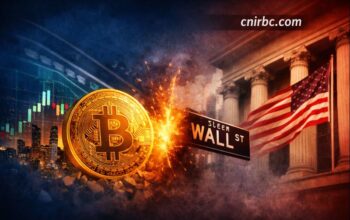 It appeared to be a straightforward inquiry: Was the treasury secretary apprehensive about the economic dangers presented by Silicon Valley Bank? The Friday morning in question saw the start of a public panic about one of the tech industry’s leading financial institutions. Janet L. Yellen, seated for a three-hour grilling on Capitol Hill, responded calmly, nodding and glancing at her notes. “There are recent developments that concern a few banks that I’m monitoring very carefully,” she said. “When banks experience financial losses, it is and should be a matter of concern.”
It appeared to be a straightforward inquiry: Was the treasury secretary apprehensive about the economic dangers presented by Silicon Valley Bank? The Friday morning in question saw the start of a public panic about one of the tech industry’s leading financial institutions. Janet L. Yellen, seated for a three-hour grilling on Capitol Hill, responded calmly, nodding and glancing at her notes. “There are recent developments that concern a few banks that I’m monitoring very carefully,” she said. “When banks experience financial losses, it is and should be a matter of concern.”
Yellen’s comments hinted at the beginning of a flurry of activity behind the scenes at the White House. Concerns began to arise about the possibility of a run on Silicon Valley Bank, which could cause widespread destruction not only in California, but also in the United States economy at large. In a meeting, Jeff Zients, the chief of staff; Lael Brainard, the national economic director; and Cecilia Rouse, one of Biden’s top economic advisers, informed the president of a type of danger that had not been seen since the financial crisis almost 15 years prior: The failure of Silicon Valley Bank, an entity that was relatively unknown to most Americans, could trigger a more widespread crisis in the nation’s banking system.
According to one White House official, “We were already very focused on that when we spoke to the president Friday morning. We were already alert to the potential this could lead to contagion and could implicate a series of what are pretty large banks.”
A frenzied, roughly 72-hour race soon followed in Washington to confront the threat of a full-blown financial meltdown. A bank was on the verge of collapsing, and billions of dollars — in the form of workers’ paychecks and tech companies’ balance sheets — were about to be lost. The government faced fears of an economy in free fall, rekindling nightmares of the Great Recession in 2008.
Ultimately, the Biden administration opted for a major intervention with exceptional speed, acting to safeguard the finances of other firms on the brink of ruin while preserving deposits at Silicon Valley Bank. Their efforts demonstrated how willing the president was to take the risk of being accused of providing emergency assistance to bail out the financial sector — an accusation the White House categorically denies — in an effort to maintain system stability and prevent a worsening crisis. This account is based on interviews with 20 individuals familiar with the decision-making process, including top White House officials, leading congressional lawmakers, and tech industry executives. Many of them spoke on the condition of anonymity to describe private conversations that had market-moving implications.
The administration had until Asian markets opened on Sunday to ensure that SVB customers could withdraw funds and businesses could pay their workers — all without causing similar runs on other U.S. banks. Over the weekend, top aides at banking regulators observed surges in requests for cash withdrawals at banks that appeared to be unrelated to SVB, according to three sources.



